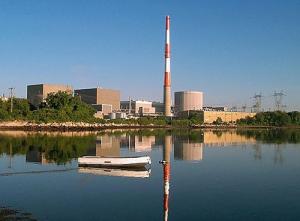Connecticut Reviews Millstone Plant Status

The Connecticut Department of Energy and Environmental Protection (DEEP), in collaboration with the state Public Utilities Regulatory Authority (PURA), has released a final resource assessment report regarding the Millstone nuclear generating station. The report looks at both the current and future financial viability of nuclear facilities as well as the role such facilities may play in meeting Connecticut’s carbon reduction goals and other emission targets. The review also examines mechanisms for achieving those targets. In their final evaluation, DEEP and the PURA found that, assuming the accuracy of the most recently verified publicly available data, the Millstone units are likely to remain profitable through 2035 under multiple scenarios.
At the same time, however, the authors cautioned that Millstone’s present and projected economic conditions hinge on energy market revenues and plant operating costs. Consequently, they said, a few key cost inputs could significantly impact the result. Indeed, the report observes that should new cost information received from Dominion Resources, the plant’s owner, be confirmed, the financial viability models already run could be altered in such a way as to demonstrate that the Millstone units are at risk.
The authors elaborated that after their initial analysis was complete, Dominion submitted on November 30, 2017 a revised two-page summary of high-level, short-term forward financial projections. The company followed up by filing a longer, redacted document on January 10, 2018, which contained unverified forward-looking projections for Millstone.
With the updated data in mind, the authors recommend that the state move forward with a recent directive from the legislature that a long-term power procurement strategy be implemented. The report says that the legislative plan was envisioned as a hedge against the risk that the Millstone plant might cease operations. The report suggests that an additional step to the procurement process should be considered under which eligible, existing zero-carbon resources would be allowed to demonstrate that they are at risk of retirement if they wish to be evaluated on attributes other than price.
Although the Millstone facilities have been the subject of numerous safety-related shutdowns, even being placed at times on “enhanced examination status” by the U.S. Nuclear Regulatory Commission, the report concludes that closure of the plant would be detrimental to Connecticut overall, especially in terms of how retirement of the Millstone units would impact carbon reduction goals currently being pursued by the state.
More specifically, the authors pointed to studies as indicating that retirement of the facilities would increase carbon dioxide emissions for the entire New England electric sector by 80 million short tons, or 25% over the modeling horizon. They averred that it would be necessary to replace at least 25% of Millstone’s 2,200 megawatts of zero-emission nuclear generation with large-scale hydropower, demand reduction, energy storage, and zero-emission renewable energy in order to prevent “backsliding” on Connecticut’s statutory greenhouse gas emission reduction goals.
According to the report, such replacement power would cost the state’s ratepayers an estimated $1.8 billion (in 2017 dollars). Even so, DEEP and the PURA warned that regional emissions would increase by 20%. Underscoring the importance of Millstone, the study estimates that replacing 100% of Millstone’s output with other zero-carbon resources would cost Connecticut consumers an estimated $5.5 billion.
In the report, the authors state that their studies indicate that the hypothetical retirement of the Millstone plant would have significant negative impacts on the region’s electric grid with respect to fuel diversity, energy security, and grid reliability. Although DEEP and the PURA acknowledge that closure of the Millstone facilities would not trigger the need for new capacity in Connecticut specifically, they disclosed that such a shutdown would cause the New England region as a whole to need new generation capacity.
And, the authors noted, any replacement capacity procured through the market overseen by the Independent System Operator of New England is likely to be natural gasfired, which would exacerbate security and system reliability issues in light of the region’s over-dependence on natural gas. Resource Assessment of Millstone Pursuant to Executive Order No. 59, filed Feb. 1, 2018.



